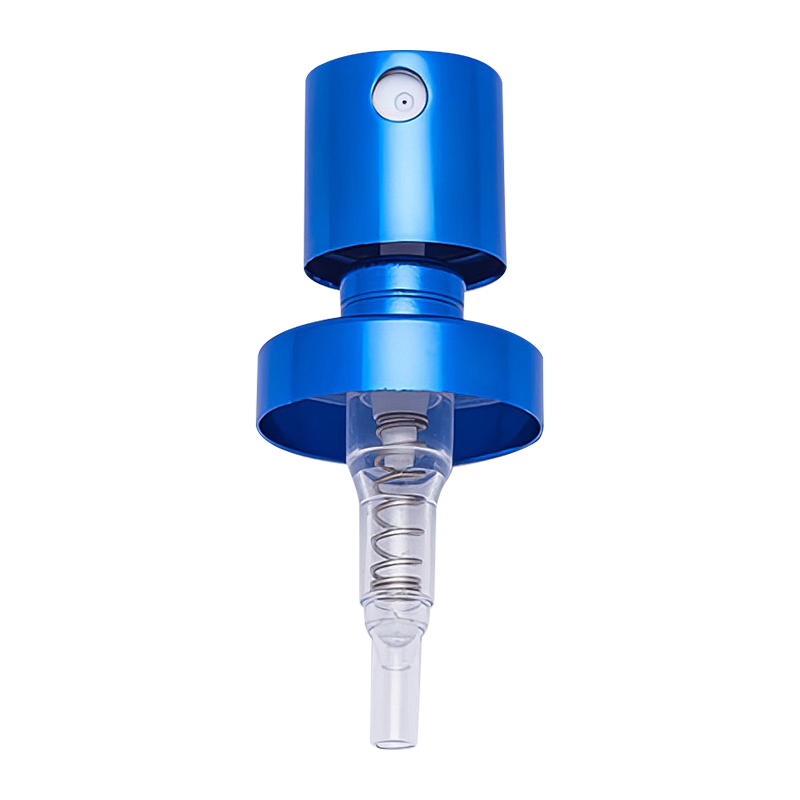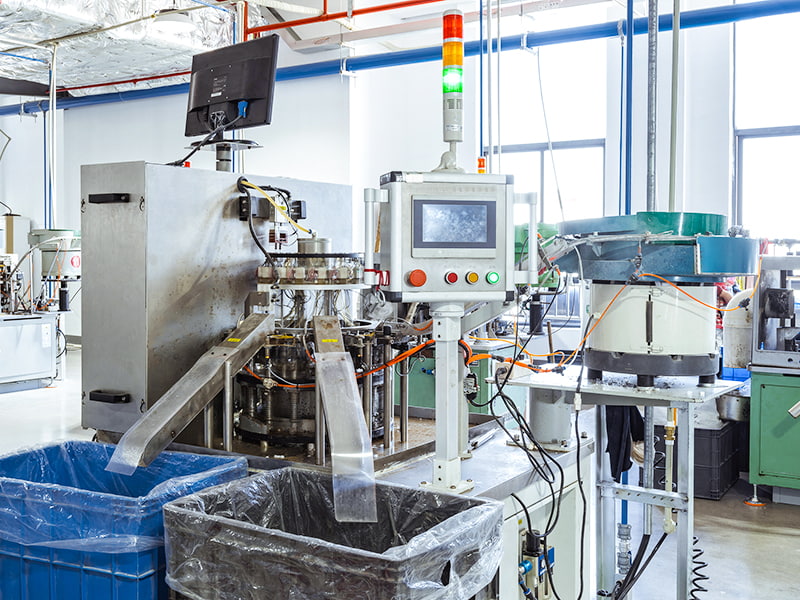Entering into a production partnership with crimp pump manufacturers requires more than simply placing an order. When dealing with specialized components such as the FEA20 crimp pump suppliers, you must carefully transition from sample validation to large‑scale production, negotiating effectively and managing risks at every step. This article guides you through each stage—from evaluating supplier capabilities, through negotiation, to scaling up production and controlling cost and risk.

XY-PT-⊘20MGBMG 20mm Crimp perfume fine mist pump sprayer higher type with bigger discharge
1. Understanding the Market for FEA20 crimp pump suppliers
What is an FEA20 crimp pump and why it matters
- The "FEA20" designation refers to a 20 mm neck diameter crimp‑on spray pump commonly used in perfume and fine‑mist packaging. :contentReference[oaicite:0]
- These pumps involve crimping a ferrule onto the bottle neck—ensuring a secure fit and preventing leakage.
- Because of their use in premium packaging, quality, finish, and consistency matter greatly.
Typical supply‑chain structure and supplier types (OEM, ODM, trading)
- You may encounter pure trading companies that source from factories, OEM factories that produce to your design, or ODM manufacturers offering standard models.
- For FEA20 crimp pumps, many suppliers emphasise high volume production and finish treatments (e.g., aluminium stamping, injection moulding, surface oxidisation).
Key differences between sample orders and large‑scale orders for the FEA20 crimp pump
- Sample orders: small quantity, higher unit cost, focus on finish, function, compatibility with bottle.
- Mass production: large volume, lower unit cost, require stability, consistent quality, tooling amortisation.
2. Preparing for Negotiation: how to evaluate FEA20 crimp pump supplier capabilities
Supplier factory assessment checklist
- Production bases: number of plants, total area, employee count (our company example: 100,000 m² + 250,000 m² construction area; over 600 employees including 60 senior managers etc.)
- Quality system: ISO certification, inspection equipment, full‑auto lines.
- Production capacity: monthly output, lead times for sample vs full run.
- Technical capabilities: finishing processes (e.g., aluminium stamping, injection moulding, surface treatment, crimping); ability to customise.
Technical capability, quality system, production capacity, lead time
- Verify if the supplier has full‑auto production equipment and full‑auto inspection machines (reduces human error).
- Ask for their tooling and mould capabilities – how many new tooling sets they can manage per year.
- Lead time: sample lead time (often 2‑4 weeks) vs mass production lead time (e.g., 30‑45 days) for FEA20 crimp pump types.
Sample evaluation phase – from prototype to approved sample
- Send sample pump to test on your bottle type: check fit, spray performance, leakage, dosage consistency.
- Approve finish appearance, logo stamping, colour, surface treatment.
- Once sample is approved, the supplier should issue a sample approval form or specification sheet that will become part of the contract for mass production.
| Stage |
Focus |
Typical Key Checkpoints |
| Sample Order |
Fit, finish, function |
Compatibility with bottle, spray performance, visual appearance |
| Mass Production |
Volume, consistency, cost |
Unit cost, defect rate, delivery reliability |
3. Effective Negotiation Strategies: negotiation tips with FEA20 crimp pump manufacturers
Price negotiation – unit cost, tooling/mould cost, MOQ, payment terms
- Ensure clarity on what is included: pump body, ferrule, dip tube, packaging, labelling, shipment.
- Tooling/mould cost: for new colour or collar design, there may be upfront tooling charges; negotiate them either into the unit cost or shared amortisation.
- MOQ: many suppliers list MOQ for FEA20 crimp pumps, e.g., 10,000 pcs or more.
- Payment terms: sample payment, deposit, balance on shipment; consider escrow or third‑party inspection holdback.
Contract terms – quality acceptance, penalties, delivery schedule
- Define acceptable defect rate (e.g., ≤ 1 % for visible finish defects, ≤ 0.5 % for functional defects).
- Agree on penalties: e.g., supplier reworking or replacing defective items before shipment, partial credit if late or defective.
- Delivery schedule: pilot run, first full run, incremental deliveries; specify shipping terms (FOB, CIF), packaging condition.
Managing customization requests (colors, finishes, logo, output dose)
- If you require specific finish (e.g., matte silver aluminium, gold plating), ensure supplier provides material certification and surface‑treatment process control.
- Output dose consistency: many FEA20 crimp pumps list an output (e.g., 0.130 ml) in datasheet.
- Logo/branding: discuss lead time, minimum run for new logo, cost per colour change, and final tooling ownership.
| Negotiation Item |
Typical Pitfall |
| Unit Price |
Supplier quotes low price but quality suffers in mass production |
| Tooling Cost |
Buyer assumes no tooling cost but later gets hit with high change‑mould fees |
| Delivery Delay |
No penalty defined, shipment gets delayed 4‑6 weeks |
| Quality Defects |
No acceptance criteria – huge scrap or rework later |
4. From Sample to Mass Production: sample to mass production strategy for FEA20 crimp pump orders
Pilot run strategy and sample validation
- After sample approval, instruct supplier to run a pilot batch (e.g., 500‑1,000 pcs) under mass production conditions and provide inspection report.
- Review pilot batch for consistency: finish variation, spray performance, packaging defects, labelling accuracy.
Scaling production – capacity ramp‑up, tooling amortisation, QC planning
- Ensure supplier has sufficient capacity to ramp up: e.g., for 100,000+ units monthly, check machine count, workforce, shifts.
- Tooling amortisation: negotiate that unit price reduces after certain volume or after tooling cost recovered.
- Quality control: set up inline inspection (e.g., 100 % visual on finish, random functional test of 1 % sample), and third‑party pre‑shipment audit.
Logistics, packaging, and export readiness
- Clarify packaging specification: ex‑works vs. FOB, palletisation, carton strength, labelling for export.
- Delivery to your port, lead time buffer, EXW to FOB terms, documentation (packing list, CO, inspection report).
- Customs duties and shipping insurance – discuss who bears risk, who arranges shipping.
5. Controlling Risk: risk control when sourcing FEA20 crimp pumps from China & cost breakdown FEA20 crimp pump production for bulk orders
Common risks – quality defects, supplier non‑performance, IP/counterfeit, logistics delays
- Quality defects: colour mismatch, spray failure, ferrule leak, tube length wrong.
- Supplier non‑performance: missed lead time, cancelled orders, capacity overstretch.
- IP/counterfeit: your design or logo may be copied, or supplier supplies to your competitor.
- Logistics delays: shipping congestion, customs hold‑ups, missing documentation.
Risk mitigation measures – supplier audits, third‑party inspection, payment safeguards
- Conduct factory audit (on‑site or virtual) — check equipment, process flow, worker skill, QC lab.
- Insist on sample approval and sign‑off before mass run; include inspection clause in contract (e.g., 100 % finish check, 1 % functional test, third‑party pre‑shipment check).
- Use payment safeguards: escrow, release balance after inspection, holdback, guarantee clause.
- Use contractual IP protection: non‑disclosure agreement (NDA), specify exclusivity, tooling ownership, non‑transfer clause.
Cost structure transparency – materials, labour, overhead, shipping; how to negotiate cost breakdown
- Request supplier to provide cost breakdown: e.g., aluminium body cost, ferrule cost, dip‑tube cost, surface treatment cost (anodising/plating), labour, packaging, freight.
- Analyse cost per unit at pilot vs full run; check if unit cost drops after volume threshold (tooling amortised, process more efficient).
- Negotiate cost review clause: if material raw‑cost drops significantly, supplier shares benefit or lowers price accordingly.
| Cost Component |
Typical % of Unit Cost |
Risk Control Action |
| Materials (aluminium body, ferrule) |
40‑50% |
Material certificate, periodic testing |
| Labour & Overhead |
20‑30% |
Audit worker hours, overtime, reject rate |
| Surface finish/treatment |
10‑15% |
Finish sample approval, colour consistency check |
| Packaging & Shipping |
5‑10% |
Check carton specs, FOB terms, freight cost variance |
6. Why Partnering with Our Company
Overview of Zhangjiagang XinYe Chemical Sprayer Co., Ltd. and why we are a reliable partner
Zhangjiagang XinYe Chemical Sprayer Co., Ltd. was founded in 2006. The company has three production bases: ①Zhangjiagang headquarters ②Zhangjiagang branch ③Huaian branch; totally covering 100,000 square metres and 250,000 square metres construction areas. It is a company with strong technical force, with more than 600 employees, including 60 senior managers and nearly 100 quality management and technology development staff.
Our production bases, capabilities, quality commitment, full‑auto lines
The company considers product quality as its life source. It adopts more advanced full‑auto production equipment and full‑auto inspection equipment. Xinye people stick to the following commitment and motto—ensuring quality for survival, managing for efficiency, persistence for distinction and seeking trust for reciprocal win.
How we handle FEA20 crimp pump supply & support clients from sample to mass production
Though our company primarily produces perfume sprayer components—covering aluminium stamping, injection moulding, aluminium surface oxidisation, automatised assembly forming a complete production chain—our experience with fine‑mist sprayer technology positions us well to support OEM orders requiring the FEA20 crimp pump format. With ISO9001‑2008 certification and international export experience, we are equipped to guide clients from initial sample development through to large‑scale production with traceable quality control and reliable delivery.

7. Conclusion and Key Takeaways
Working with the right FEA20 crimp pump suppliers means more than selecting the lowest price. It means evaluating technical and production capabilities, preparing a strong negotiation plan, transitioning smoothly from sample phase to mass production, and embedding risk‑control mechanisms throughout. By following structured steps—from supplier evaluation, solid contract negotiation, sample to mass scaling, to cost breakdown transparency—you increase your chances of successful partnership, consistent quality, and on‑time delivery.
FAQ
- Q1: How many units should I order for a sample before mass production?
- A1: A pilot run of 500 – 1,000 units is advisable to validate consistency in finish, function and packaging before scaling to mass production.
- Q2: What minimum order quantity (MOQ) is typical with FEA20 crimp pump suppliers?
- A2: Many suppliers list MOQs of around 10,000 pcs or higher for customised versions of FEA20 crimp pumps.
- Q3: What are the main cost drivers for an FEA20 crimp pump production?
- A3: Key cost drivers include the aluminium body and ferrule material (~40‑50 % of unit cost), labour and overhead (~20‑30 %), surface treatment (~10‑15 %), and packaging/shipping (~5‑10 %).
- Q4: How can I protect against quality issues when working with overseas suppliers?
- A4: Practices such as performing factory audits, requiring sample approval, engaging third‑party inspection at pilot and full production phases, and defining clear acceptance criteria in the contract help mitigate quality risks.
- Q5: Can the unit price decrease once mass production begins?
- A5: Yes. Often mould/tooling costs are amortised after a certain volume threshold, process efficiency improves, and negotiation on cost review clauses (e.g., raw‑material cost drop) can enable price reductions.
